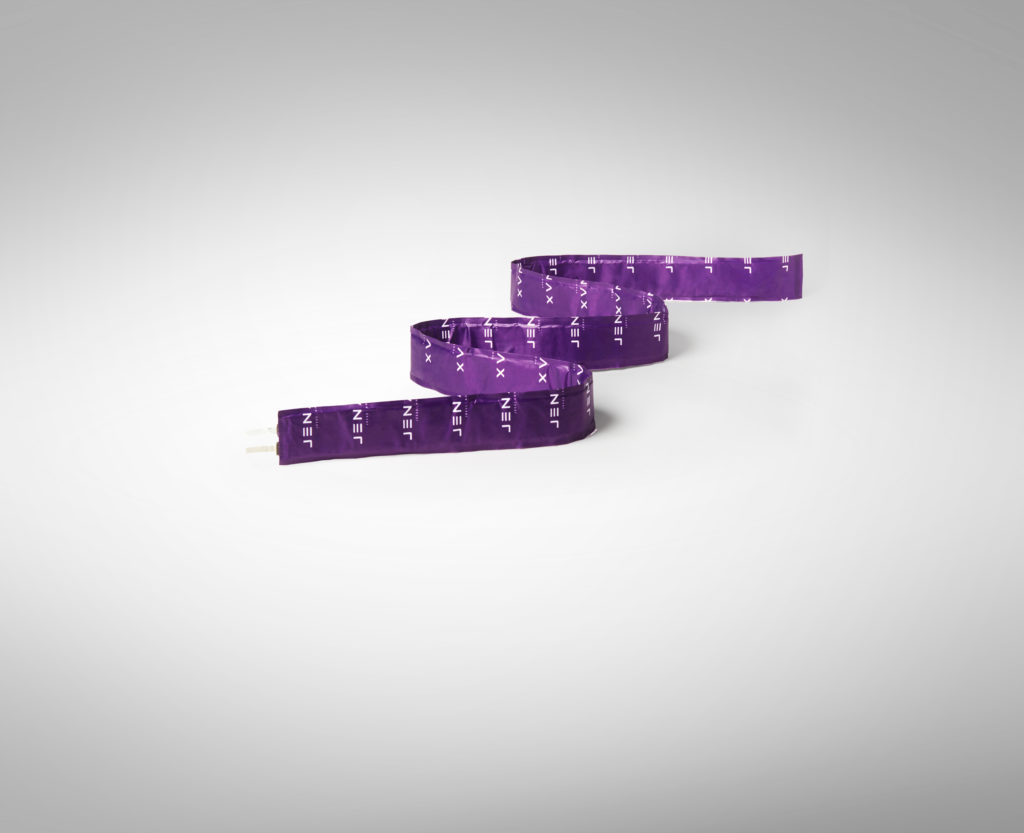Forget Foldable Phones, The Foldable Lithium-Ion Battery Is Here!

The lithium-ion batteries we use in our devices today have undergone a significant improvement. Taking the innovations a step ahead, a South Korean company Jenax has developed a lithium-ion battery that can be bent and rolled.
Dubbed as J.Flex, the advanced lithium-ion battery is ultra-thin, flexible, and rechargeable. This battery can be as thin as 0.5mm which is suitable for sensors. J.Flex can also be made as tiny as 20x20mm or as large as 200x200mm.
Flexible Batteries To Change The Future Of Wearable Devices
With the onslaught of portable devices like wearable gadgets and phones with flexible displays, the way we interact with machines is on a different level than we did before.
“What we’re doing at Jenax is putting batteries into locations where they couldn’t be before,” says EJ Shin, head of strategic planning at Jenax.
The firm demonstrated some of these new possibilities last week at CES 2020 event such as — sensor-lined football helmet to measure pressure and force of impact; a medical sensor patch embedded in clothing to monitor a wearer’s heart rate; wearable power banks in the form of belts and bracelets for patients who depend on medical devices.
Nobody wants to carry a big, bulky battery on their body all the time. “That’s when you need very thin, flexible batteries,” says Shin.
Composition Of Flexible Battery J.Flex
J.Flex is made from graphite and lithium cobalt oxide, but its exact composition and architecture remain a secret.
According to Shin, the secret of flexibility in J.Flex lies in “a combination of materials, polymer electrolyte, and the know-how developed over the years.”
The operating voltage of this flexible battery lies between 3 and 4.25 volts. Depending on the size, the battery capacity varies from 10mAh to 5Ah. The best part is that J.Flex is able to retain nearly 90% of this capacity after 1,000 charge-discharge cycles.
While each charge typically takes an hour, Shin says that J. Flex’s battery life depends on how it’s used. She says that a single charge can last for a month in a sensor, but it wouldn’t last that long if the battery was powering a display.
Non-flammable battery to minimize risks
We know that batteries can explode when their electrolytes leak out, or when the cathode and anode come close together. There are high chances of such occurrence in case of flexible batteries too. But the key to maintaining safety here is to finding good electrolytes or good ion-conducting membranes.
To tackle this issue, Jenax has developed a special semi-solid electrolyte. Shin says that the firm has taken care of the biggest causes of battery explosions by making the battery non-flammable.








